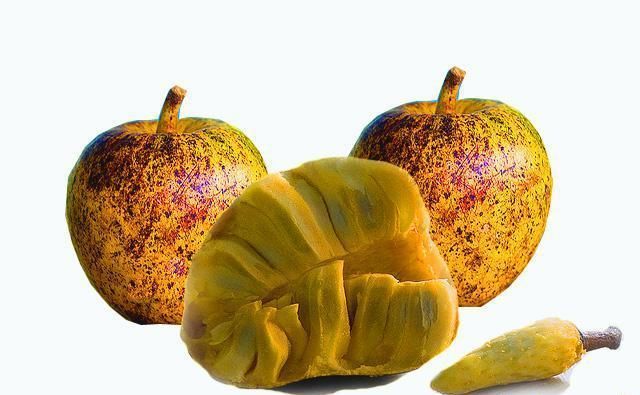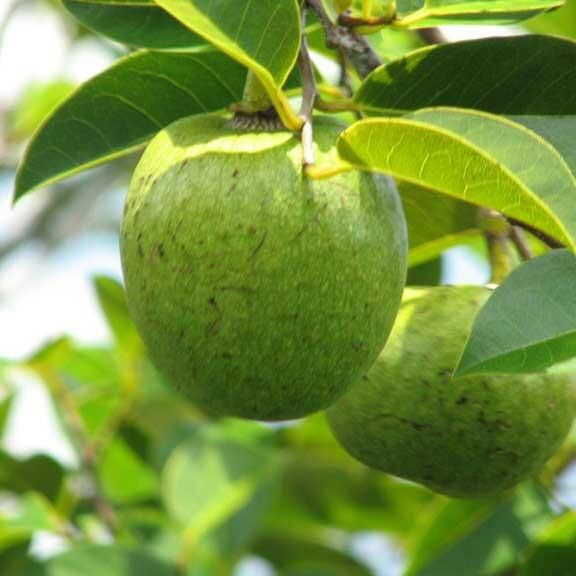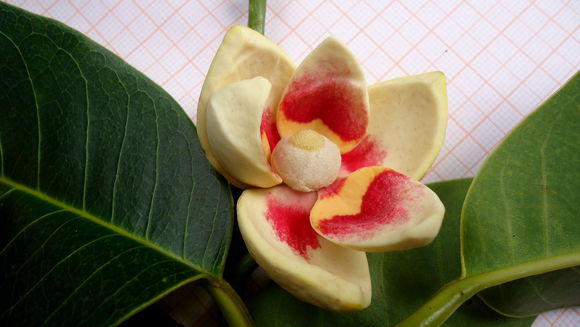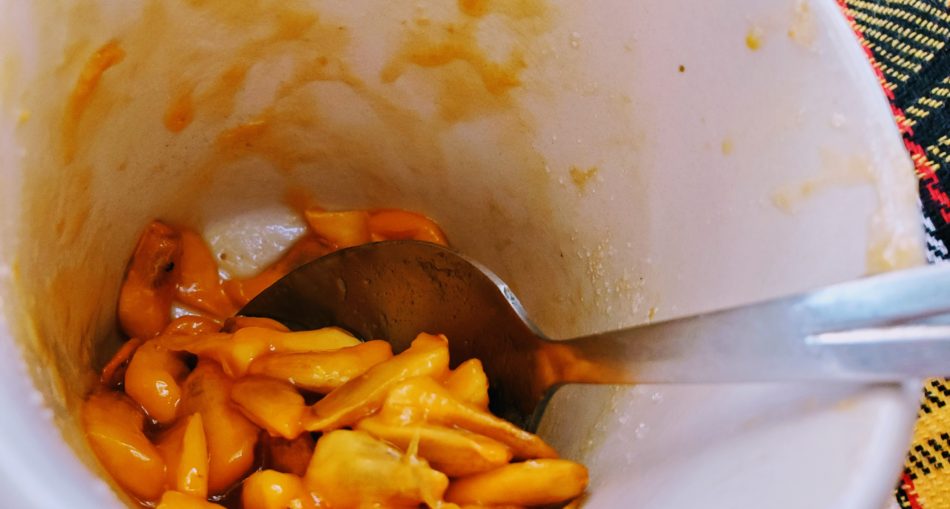Monkey Apples are often considered the black sheep of the apple family because the trees tend to grow in rather harsh conditions of high salinity, but they are also considered a weed/invasive species, as they can grow quickly and harm the health of ecosystems
Annona glabra commonly known as Pond Apple and Monkey Apple in some countries is a tropical fruit tree in the family Annonaceae, in the same genus as the Soursop and Cherimoya. The tree is native to southern Florida in the United States (including the Everglades), the Caribbean, Mexico, Central and South America, West Africa, and South Asia (Sri Lanka); it is an aggressive invader in the Pacific region. It is common in the Everglades. The tree is considered an aggressive species in Sri Lanka and Australia. It grows in swamps, is tolerant of saltwater, and cannot grow in dry soil. Some of the popular common names of the plant are Alligator-apple, Corkwood, Cow-apple, Mangrove anona, Monkey-apple, Pond apple, alligator Apple, Bullock’s heart, Cherimoyer, custard apple, palo bobo and Shiningleaved Custard Apple.
Description Of Monkey Apple

Monkey Apple tree is a small, semi-deciduous, woody tree that grows about 3–6 m high but can reach a height of 12 m. It is found growing in creek and rive banks and farm drainage systems, wetlands and Mangrove swamps, and the high tide area of the littoral zone on beaches. Normally it prefers wet to moist, poorly drained to moderately well-drained organic soils. The plant has gnarled, slightly buttressed roots. Thin, grey trunks are rarely up to 50 cm in diameter, often somewhat enlarged or buttressed at the base. Twigs are moderate, shiny red brown.
It’s leaves are alternate, oblong-elliptical, with acute or shortly acuminate apex and cuneate to rounded base, 7-12 cm long, and up to 6 cm broad, oblong-elliptical, acute or shortly acuminate, light- to dark-green above and paler below, with a prominent midrib and a distinctive small fold where the leaf blade joins the leaf stalk. These leaves are glossy in appearance, mostly hairless, and have pointed tips. However, leaves of seedlings, suckers and saplings may be slightly bluish-green when young.
The flowers are 2-6 cm across and are pale yellow or cream in color with a bright red center. They have three large and leathery outer petals that are 25-30 mm long and 20-25 mm wide and three smaller inner petals that are 20-25 mm long and 15-17 mm wide, as well as three broad sepals about 4.5 mm long and 9 mm wide. Flowering occurs mostly during summer.
The fruits are very large spherical or elongated, 5-15 cm in diameter, looking like a smooth-skinned custard apple. They are initially green in color turning to yellow or orange when ripe and then black as they decay. These fruits have a pinkish-orange, rather dry, pungent-aromatic, pulp that contains more than 100 seeds. Seeds are light-brown, ellipsoid to obovoid, each measuring about 1.5 cm long, 1 cm broad.
Nutritional Value Of Monkey Apple

Research suggests that pond apples are beneficial to human health due to its wealth of different fats, many of which are essential to human health, including:
- Caprylic
- Betulinic
- Capric
- Lauric
- Oleochemicals
- Linoleic
- Palmitic acids
Some Traditional Uses Of Monkey Apple
- Stem and Leaf is boiled for a tea, which is drunk to destroy flatworms and nematodes in Guyana.
- Bark and Leaf are mixed with the bark and leaves of Annona squamosa for a sedative and cardio tonic infusion.
- Seeds were crushed and cooked in coconut oil and applied to hair to get rid of lice in older days.
Health Benefits Of Monkey Apple
- High levels of fatty acids
- Dietary fiber
- Calcium and phosphorus can decrease levels of “bad” cholesterol
- Boost heart health
- Improves digestion
- Prevent the onset of diabetes
- Build strong bones
Culinary Uses Of Monkey Apple
- Pulp of ripe fruit is edible fresh although scarcely desirable.
- It can be made into jam
- It is a popular ingredient of fresh fruit drinks in Maldives.
- The pulp is eaten raw or made into jellies or drinks.
Some Interesting Facts About Monkey Apple

Flower of Monkey Apple | https://www.healthbenefitstimes.com/pond-apple/
- Trees begin to flower and produce fruit when they are at least two years old.
- Annona glabra is used as a root stock for other edible Annona species for its tolerance and adaptability to water-logged conditions.
- Seeds can serve as insecticide.
- Light and soft wood is used to substitute cork in fishing nets.
- Fruit can be used as forage for cattle.
- Useful fiber is obtained from the bark. It is sometimes used locally.
Precautions To Take When Using Monkey Apple
- Wash the hands properly after using this herb.
- Avoid seeds contact to eyes as it may cause blindness.
- Excess use may lead to death.
About Monkey Apple
Monkey Apples are often considered the black sheep of the apple family. It can be found almost anywhere in the world. Some of its common names are pond Apple, Alligator Apple, Custard Apple just to name a few. It is eaten by wild bore and alligators and is great for human consumption. In Guyana, the stem and leaves from the tres is used to make tea. It is also used to destroy flatworms and nematodes.
Article References:







